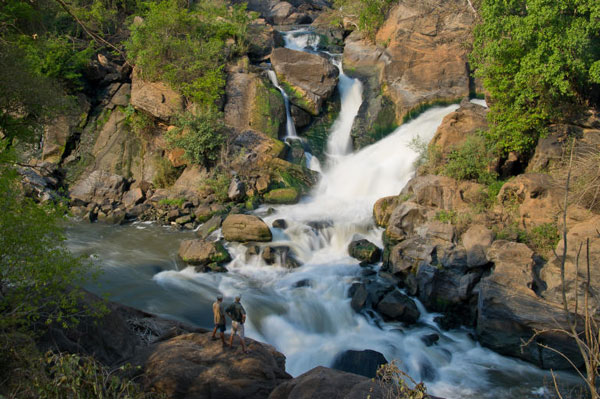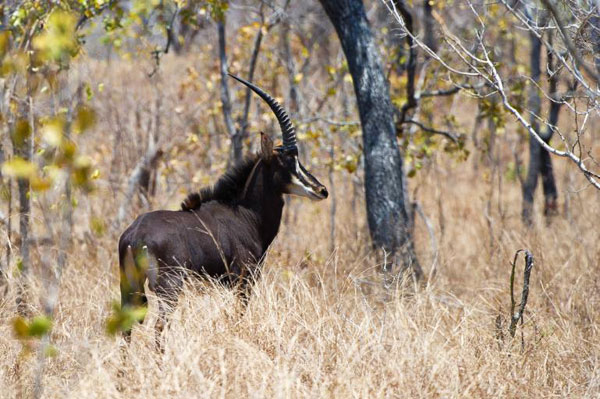Conservational victories always instil a sense of pride in humanity and paint portraits of unity between man and nature. It is a stand against the destruction of vital ecosystems, indigenous flora and the endangerment of entire species. Granted, the recovery of threatened areas and the creation of protected parks are usually acts in response to a critical circumstance that we, as humans, have initiated. So, in essence, we are picking up the pieces of a whole that we, ourselves, have shattered. Despite this ugly truth, the reason we are able to read and write about success stories of this nature is due to our own levels of determination, humility, selflessness and respect for the land we live on. Thanks to the organisations that represent the fighting goodness in us and that fund and administer the projects that have such an impact on resurrecting our broken environments.
One item of significance amongst the many heroic schemes that are carried out worldwide is the wildlife relocation programme in the Majete Wildlife Reserve in Malawi; a seven hundred square kilometre landscape of rolling greenery, grasslands and river bends. In the south of Malawi, this Reserve is currently in the process of a magnificent recovery after poaching reached horrifying levels and wiped out entire animal populations. Once a glorious wildlife sanctuary, stumbled across by explorer David Livingstone, this vibrant hive of animal activity was torn to shreds, as was Gorongosa National Park, during the Mozambiquan civil war of the 80s (read about Gorongosa’s victory). Refugees fleeing the battle grounds sought solace in neighbouring Malawi, but the desperate struggle ravaged the Majete Reserve, eliminating the elephant population in a greedy fight for ivory. By 1992 the last elephant was shot and Majete’s population of the world’s largest land mammals was officially history. Shortly to follow was the rare and stately Sable antelope that were wiped clean by 1998. At a flourishing rate, Malawi’s beautiful reserve was robbed of its inhabitants, and skulked in the shadows of its former glory having retained only a depleted population of buck, warthog and hippo.

In March 2003, without sufficient resources to lift this broken Park from the ground, Malawi received support and commitment from Africa Parks Network (APN) and the Department of National Parks and Wildlife (DNPW), who joined honorary hands and agreed to restore Majete to its golden beginning. Goals in mind were to rehabilitate and develop the area, and to reintroduce an amount of game that would initiate the natural re-population of the Park. Equally as important; this project was to operate in a manner that would be sustainable for members of the community, who, living in one of Africa’s poorest countries, would be able to rely on jobs created by tourism. The movement to protect this reserve from being targeted again has been successfully backed by law enforcement and the area is consequently secure. In consideration of the safety of the community of people surrounding the area, improved infrastructure has been built, employing the labour of up to one hundred local residents.
After a fourteen thousand hectare game reintroduction sanctuary was initially cordoned off, a further one hundred and ten kilometre fence was erected along the reserve boundary, enclosing the new members of the Majete Wildlife Reserve. Fourteen different species were carefully and systematically brought into the area; the beginning of a Malawian menagerie that today represents a celebration of African wildlife. The leathery giants that were mercilessly sacrificed for their tusks of ivory once again roamed the Majete when, in 2006, seventy carefully selected elephants were relocated from Liwonde National Park. These matriarchs have grown their families steadily; a clear sign of the comfort and health of the herds, and a reassuring nod at the success of this admirable project. To date, over one hundred more elephants have been relocated to Majete, many of them from the Mangochi area, where conflict with villagers had resulted in a tragic loss of lives on both sides.

In Malawi, Nyika National Park was the only area home to the leopard. Captivatingly beautiful, yet not often seen, particularly in this country; leopards add exceptional value to the safari experience, as they capture the eye of photographers from all over the world. This sleek individual stalks alone and maintains an elusive existence, unlike that of a lion – king of the big cats. Through ANP’s project, experts managed to introduce to Majete its first leopards in two decades. A milestone of note, these mesmerising cats became the first predators in the Reserve, thus catalysing the relationship between hunter and prey that defines life in the wild.
Most recently (September 2012), three lions from South Africa were introduced to Malawi’s flourishing reserve, making Majete an official Big Five area. These lions, known as Sapitwa, Chimwala and Shire are the first to exist there since their species was demolished during the 1980s when poaching in Malawi reached a devastating high. The successful translocation of these apex predators is recognised as the epitome of achievement, the step across the finish line for the participants who have defeated the odds and returned the Majete to the thriving representation of Malawi’s natural wealth.




